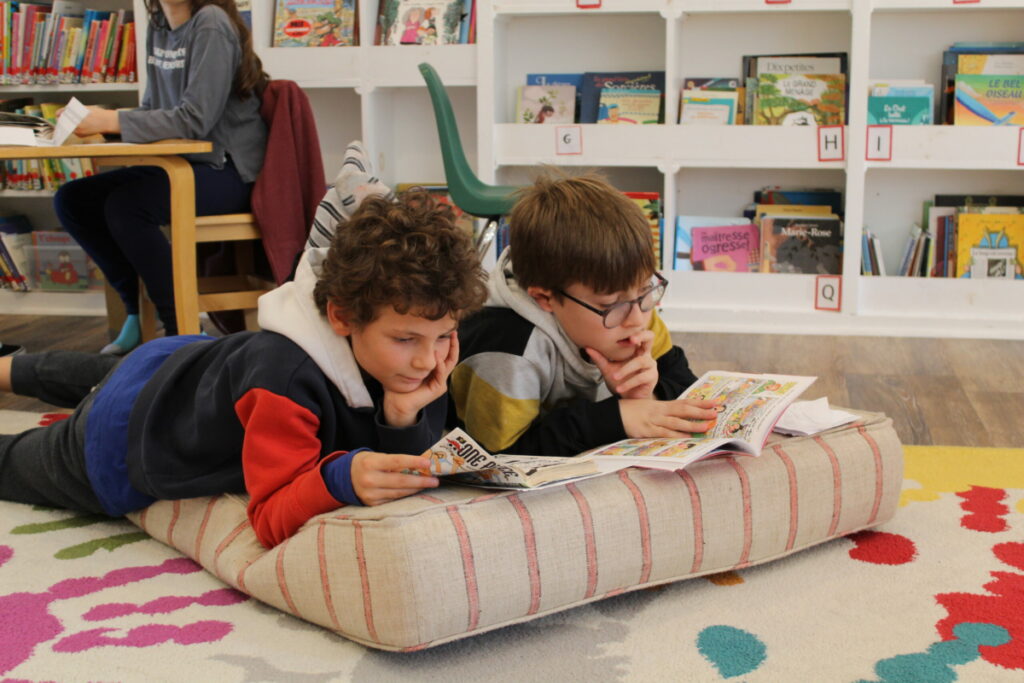
Post-COVID, I took a role teaching and coordinating a specialist program for young people needing extra support to re-integrate into the classroom environment. These high schoolers had not stepped foot in a classroom from anywhere between a month to one student who hadn’t been in formal schooling for five years. Their reasons were varied and included transitioning from a homeschooling setting, anxiety and other mental health challenges compounded by the pandemic, families relocating, expulsion from previous schools, or involvement with the out-of-home care or youth justice systems. Some of these students were highly motivated to return to the classroom, and others were terrified and overwhelmed, but they all had some things in common. As with starting high school, or a new school or simply returning after school holidays, every student experiences a certain degree of trepidation and nerves. This is magnified for this group of students. I observed common challenges relating to loss of control and a need for routine. Being in the home environment, these young people had a lot of autonomy and choice and had established routines that suited them, and all of a sudden, they were being required to accommodate the needs of hundreds of other students and adults and follow a routine and structure not of their making and not designed solely for them. Finally, these students often displayed self-doubt. Due to the lack of comparison to peer,s this was totally understandable. Am I behind in my learning? Will I fit in? Will I still get to learn the things I’m interested in? Will my talents and interests be noticed here? What will the other students think of me when they ask about my previous school experiences? Will I have another mean teacher, just like at my last school? Will I be bullied?
It was my role to rapidly re-introduce these students to the day school environment. Some of my students went on to be the first in their families to graduate high school, some overcame entrenched negative mindsets about themselves, and many rediscovered their love of learning in a social environment. Needless to say, through my own successes and failures as their teacher, I picked up a heap of tricks and strategies to get these students to exceed their own and others’ expectations.
2. Start with your strengths
So you haven’t been in formal schooling. That doesn’t mean you haven’t been learning! Many homeschooled students are highly productive and develop unique sets of skills and knowledge. So make sure that your new school knows what these strengths and interests are and provides you with the opportunities to continue to explore them through projects, electives, clubs, and other avenues. Be sure to tell the school what you’ve been up to! What passion projects, community service, hobbies, and knowledge have you developed? For example, I once worked with a student who had spent much of her three years homeschooling, developing digital artwork. So, her first project was to put together an exhibition of all of her artwork. It was unforgettable! Needless to say she went on to study art.
Some common strengths developed by students who learn at home include resourcefulness (not always having a teacher available means they’ve had to figure things out for themselves), independence, creativity, self-motivation, understanding of their interests, and finally, homeschooled students frequently perform highly on academic testing. Be sure to select subjects and co-curricular activities that play to these strengths and remind yourself that you have plenty to offer your new school!
2. Develop patience and resilience: things won’t always go your way

Transitioning from an environment that is centered around your learning, to an environment centered around the learning of hundreds of students, is a significant culture shock. I would often observe my newly arrived students becoming frustrated or agitated at being told ‘no’ a lot of the time and at the lack of flexibility in face-to-face schooling. Students can no longer simply take breaks when they want, pick and choose what they learn at what time of day and so forth. Their sense of autonomy is restricted and this can boil over into frustration, disengagement or overwhelm.
As such, it is key that you prepare yourself by understanding that being told ‘no’ isn’t always about a teacher wanting to restrict your creativity or autonomy, it is about the logistical impossibility of having 100 students walk to the beat of their own drum. There is a reason and logic behind the structures in place which mean that the right teachers and students get together at the right times in the right spaces with the appropriate resources. By all means advocate and speak up for yourself, negotiate for greater student autonomy and demonstrate that you are worthy of it. But be patient with the staff and with yourself, and understand that moving into the system means compromising on individual needs for the greater good.
3. Don’t leave friendships to chance
Contrary to stereotypes, many students who have been homeschooled have learned to communicate with adults and with peers in a range of settings through community groups and extra-curricular activities. However, the prospect of attending a new high school is daunting for everyone! What I’ve observed consistently is that friendships rarely just happen by chance. One of my most effective strategies has been introducing students who come from similar backgrounds or who share similar experiences. Friendships begin with finding common ground with others and it really doesn’t take much to form a connection: the suburb you live in, the music you like, your favorite TV series, your favorite school subject, people you follow on social media, your hobbies and interests, all these are things that can get the conversation started.
From there it’s about sharing and experiencing these things together. Being proactive means inviting potential friends to events, sharing things on socials, spending time together, and continuing to learn more about them and prove that you are a trustworthy and loyal friend. That’s all anyone wants from a friendship, but in order to make friendships, you need to be willing to provide friendship, which means stepping into those initial moments of discomfort. Join clubs, sports, and activities at school, participate in class, and approach others at lunchtime…in a nutshell, put yourself out there, and you’ll find your tribe.
4. Your past learning experiences do not define your future experiences
For some students, the reason to move to homeschooling was because of negative experiences with the formal education system. It is important that you try your best to come in with fresh eyes and an open mind. Just because you had a horrible science teacher last time doesn’t mean you will hate science this time around. Perhaps a new teacher will completely transform how you feel about a subject, I’ve seen it time and again.
School is what you make it. Students who find their place in a school and who flourish are the students who see the system for what it is, its upsides and its flaws, and who are smart enough to make it work for them. They focus on the aspects of school within their control and they advocate for themselves in these areas. They seek out opportunities to participate in activities they enjoy, find aspects of all subject areas they are curious about, build close relationships with the teachers and peers they get on with and maintain respectful professional relationships with everyone else. In essence, they take accountability for their mindset about school and they make that mindset a positive and proactive one.
Eric is the High School Director at the French American Academy (FAA). The FAA is currently enrolling students from all backgrounds and previous school experiences into Grade 9 in 2025.
To find out more go to: https://faacademy.org/high-school/







